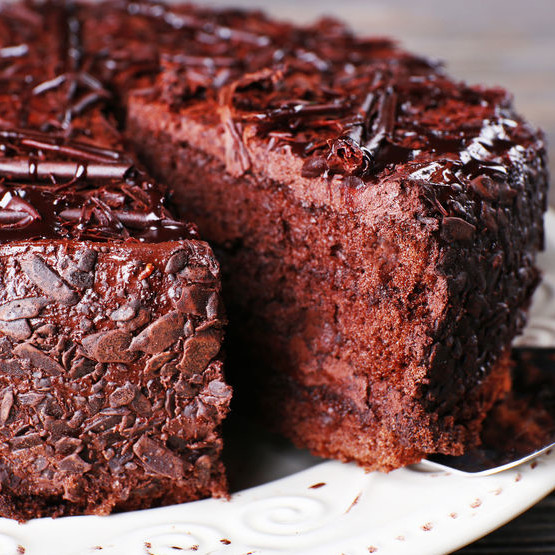
Cakes
What are Cakes?
Cakes are bakery products that are rich in sugar, fat and eggs, and can be accompanied with a wide variety of inclusions like fruits and flavors such as vanilla extracts.
They represent a very important segment within the baking industry.
- They come in many varieties and are very versatile in terms of flavors, textures, shapes and colors, perfect as snack or as serving size portions on special occasions.
- They are typically made from soft wheat flour characterized by low protein content and high purity (mostly endosperm and starch from center of wheat kernels).
Origin
The first kinds were produced by mixing white flour, eggs, fresh butter, and table sugar. These were called pound cakes, the first known type of batter cakes. The next generation was developed when bakers found that a lighter, fluffier product could be made by whipping the eggs, and then folding in sugar and flour. This became known as the foam type.
The layer cake was created in the 19th century, when baking powders were put on the market, allowing a greater variety of batter types. In the mid-20th Century, an entirely new type of cake that combined the qualities of two basic types—foam and layer—were created, resulting in the chiffon type.1
Types of cakes
They can generally be categorized into three types, depending on the differences in formulation, processing conditions and attributes of finished product:2,3
- Batter type: rely on eggs, flour, and milk for structure, and contain high amounts of fat and water which creates an aerated and chemically-leavened oil-in-water emulsion. Much of the volume of the finished product is created by baking powder. Batter types are classified into:
- Brownie – Does not need much leavening and is a dense, shelf stable cake.
- Muffins – Has a chewy and resilient texture due to its higher water content.
- Cupcakes – Contains a higher sugar and fat content with a longer shelf life
- Pound cakes -Relies on eggs and fat for leavening, e.g. butter, pound and snack cake
- Layer cakes -Relies on cholrinated cake flours to help with starch gelatinization and leavening due to high fat and sugar content.
- Foam type: rely mainly on the extension and denaturation of egg protein for the bulk of the final volume. They can be regarded as “cakes without shortening” given the absence of the oil-in-water emulsion, characteristic of batter systems. Depending on the egg fraction used, foam type cakes are divided into:
- Angel food cake -Uses egg white proteins to trap air during mixing. Lack of fats.
- Sponge cake– Uses either whole eggs or yolks, or a combination of both. Uses some fats.
- Chiffon Type: Made with a combination of batter an foam to form a modified “Foam-type” grain and texture.
How are cakes made?
Typical batter-type cake (yellow layer) formula:2,3
| Ingredient | Baker’s % |
| Chlorinated soft wheat flour (air classified, short patent) | 100.0 |
| Table sugar (refined, granulated sucrose) | 100.0–180.0 |
| Shortening (cake or all purpose) | 40.0–50.0 |
| Water | 70.0–120.0 |
| Whole eggs (liquid) | 60.0–90.0 |
| Natural cocoa, dutched cocoa, chocolate | 10.0–20.0 |
| Non-fat dry milk | 8.0–12.0 |
| Salt | 3.0–4.0 |
| Baking powder | 4.0–6.0 |
| Vanilla or lemon flavor | 1.0–2.0 |
| Emulsifier | 1.0–1.5 |
| Baking soda | 1.0–1.5 |
| Yellow color | 0.4–0.5 |
Flour intended for cake making have, typically, the following specifications:4
- Protein content 7.0–9.0%
- pH 4.5–5.2 (indication of chlorine gas treatment)
- Particle size of 10–40 µm (microns)
- Ash content of 0.30–0.40%
- Class of wheat used: Soft Red Winter (SRW) and and Soft White (SW)
Relevant formula considerations:
- The amount of sugar varies with the type of cake (yellow, white or chocolate cake).
- For optimum air incorporation into the batter, the fat must be hydrogenated, with plastic condition, with or without emulsifiers added.
- The amount of water added depends on the contribution of moisture from liquid eggs and use of liquid sweeteners such as HFCS, invert syrup, honey or 42 DE corn syrup.
- The amount of whole eggs as structure building ingredients depends on the amount of tenderizing and aerating ingredients such as sugars and fat.
- Baking powder can be single or double acting, i.e., it can contain one or more leavening acids to produce carbon dioxide quickly during mixing or slowly when triggered by heat during baking.5
Application
Commercial production
The manufacture of batter, foam and chiffon cakes follows in general the same steps; each type of baked goods has its particular processing conditions and dedicated equipment. The basic steps are:
- Ingredient scaling/metering
- Mixing (target specific gravity or degree of air incorporation depends on the type of product)
- Depositing or panning
- Baking
- Cooling
- Finishing (decoration can be optional)
- Packaging
Mixing methods:
- Single stage (all-in method)
- Creaming method
- Blending method
- Multi-stage method
- Continuous mixing (automated and controlled aeration)
References
- Food Timeline Library. “About cake.” http://www.foodtimeline.org/foodcakes.html. Accessed 29 December 2018.
- Gisslen, W. “Cake Mixing and Baking.” Professional Baking, 7th edition, John Wiley & Sons, Inc., 2017, pp. 373–413.
- Labensky, S. R. “Cakes and Icings.” On Baking: A Textbook of Baking and Pastry Fundamentals, 3rd edition, Pearson Education, Inc., 2016, pp. 431–485.
- Finnie, S., and Atwell, W.A. “Products from Soft Wheat Flour.” Wheat Flour, 2nd edition, AACC International, Inc., 2016, pp. 111–129.
- Miller, R. “Leavening Agents.” Encyclopedia of Food and Health, Volume 3, Academic Press: Elsevier Ltd., 2016, pp. 523–527.

